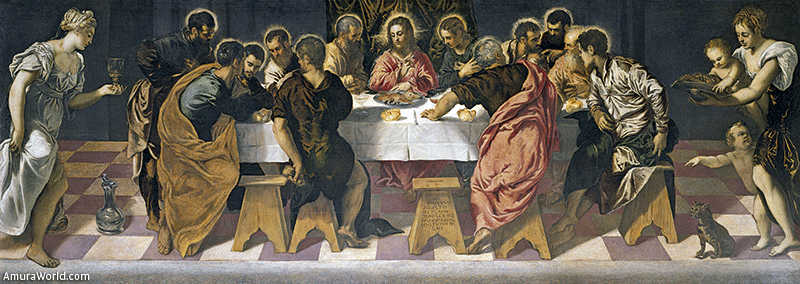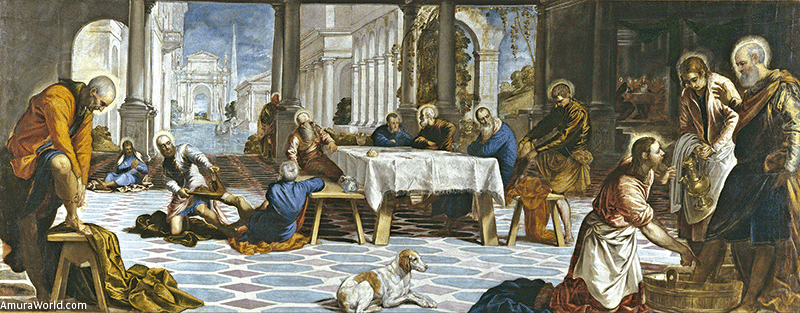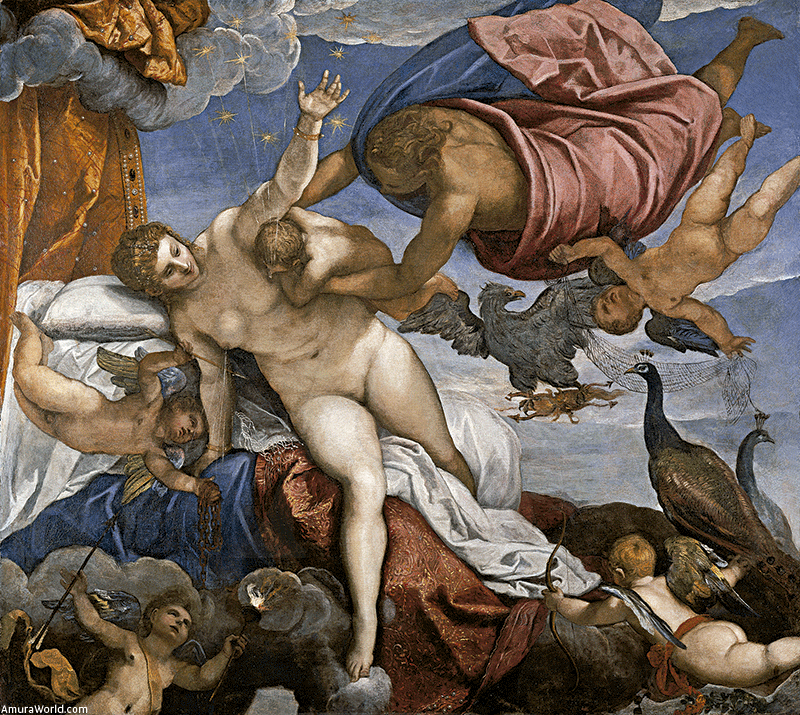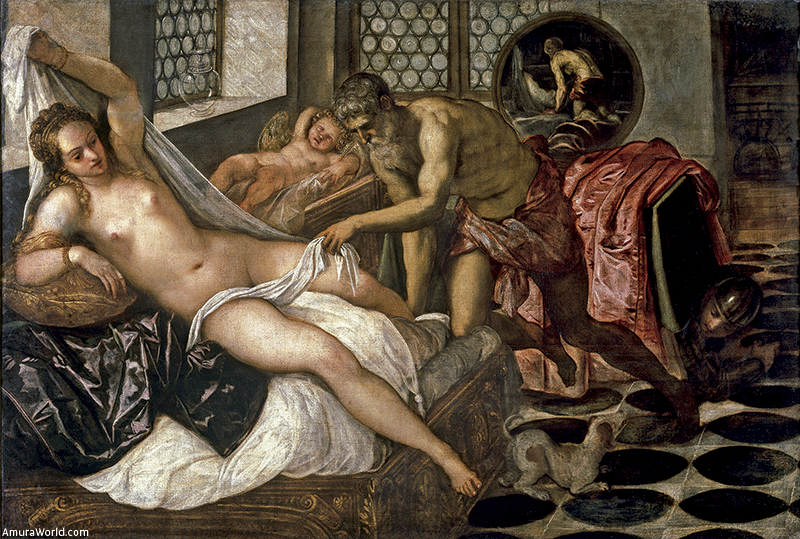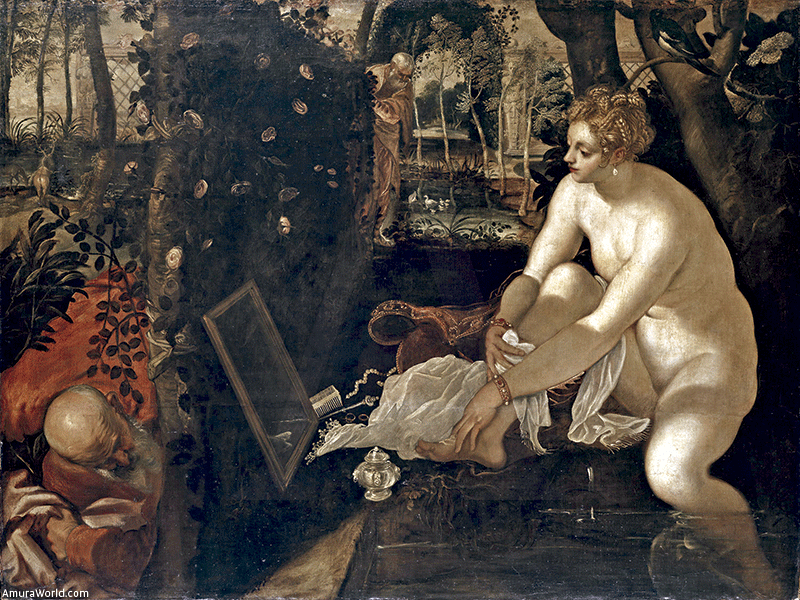For the first time, after 400 years, the most outstanding works of religious art by l Tintoretto painted for the church of San Marcuola: The Last Supper (church of San Marcuola, Venice), and Christ washing the Disciples’ Feet (Museo del Prado, Madrid) are together again in an exhibition of 65 works of the Venetian artist who became a legend through his paintings.
Featuring a selection of 49 paintings, 13 drawings and 3 sculptures, the exhibition will reveal the variety of registers in which Tintoretto worked and his interest in all the major artistic genres. In particular, it will focus on his facet as a painter of religious narratives, the field in which he produced his most renowned compositions.
Among the works are some of his main mythological composition such as Venus, Alte Pinakothek from Munich and the Origin of the Milky Way from the National Gallery in London.
There are also examples of his work as a portraitist, including the self-portraits from the Philadelphia Museum of Art (Philadelphia) and the Musée du Louvre (Paris), and the Portrait of Lorenzo Soranzo from the Kunsthistorisches Museum in Vienna.
The exhibition will pay particular attention to the artist’s creative process, placing great emphasis on the concept of “disegno” in the sense of a tool of learning, experimentation and composition, as well as on technical issues, the latter included as an integral part of the exhibition. Drawing was exceptionally important to the artist, and the exhibition features a group of works on paper. They fall into three types: drawings of classical sculptures and sculptures by Michelangelo, drawn from small models which will be displayed alongside these studies; preparatory studies for entire compositions, of which the only surviving one, for Venus and Vulcan will be displayed; and preparatory studies of individual figures, often reused by Tintoretto for various different works.
The exhibition constitutes the first anthology dedicated to Tintoretto in Spain, as well as the first exhibition on Tintoretto of this size and importance since the one held in Venice seventy years ago. The Prado’s intention is to offer a rigorous and comprehensive survey of the artist’s long career and is itself the fruit of a lengthy and exhaustive research project which will be reflected in the accompanying catalogue.
The catalogue, compiled by Miguel Falomir, restorer at the Museo del Prado, has been published in Spanish and English with the participation of the best specialists in Tintoretto in America and Europe. Due to its rigor and size, this publication aspires to become the point of reference for students of Tintoretto, since there are no current monographs dedicated to the artist.
The publication has three texts written by Miguel Falomir, and chronological directory by Linda Borean, researcher at the University of Udine; texts about the artist by art historian Roberts Echols and Roland Krischel, the curator of the Wallraf-Richartz Museum in Cologne, as well as a piece of work on the artist’s technique by Jill Dunkerton, of the Restoration Department at the National Gallery in London. The exhibition also features an essay by Frederick Ilchmann, assistant painting restorer at the Museum of Fine Arts, Boston, about the artist’s religious paintings.
Of all the legendary artists in the history of art, Tintoretto is the only painter who owes his fame exclusively to his works, inspiring numerous men and women throughout different time periods to create literary and pictorial work. However, one has to consider that the Venetian artist caused a sensation of his own times and after his death, truly polemic adhesions and phobias, without the need of having to create anything as extravagant as Caravaggio with its violence, Rubens in the intelligence service and the Leonardo da Vinci, accused of sodomy. Tintoretto achieved fame only from his art.
At the same time, the readers’ circle of the Museo del Prado, presents Tintoretto and the writers by Vicente Molina Foix, a series of valuable essays based on the texts of various authors from Areino and Moratín to Alberti and Gimferrer. This literary work also presents relevant works by Henry James, Theóphile Gautier, Taine, Malraux, Jean-Paul Sartré and Thomas Benrhard, to mention a few of the great to have written about the Venetian artist.
This is the environment can be experienced in the legendary Museo del Prado in Madrid thanks to the works of Tintoretto, a man that very quickly caused a sensation in the art world, which in the 19th century, inspired anecdotal paintings in the ponpier style, which made him compassionate and contrary to piety, which inspired literary phantasms in the 20th century and now after four centuries, brings together lovers of art and universal culture in 21st-century Spain. The exhibition runs until the third week of May.
Text: Salvador Alejandro González ± Photo: IMGRES • AH.


